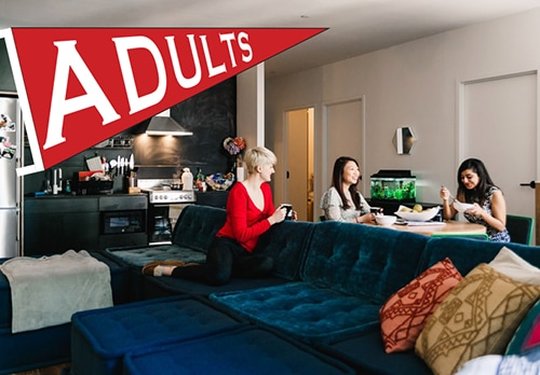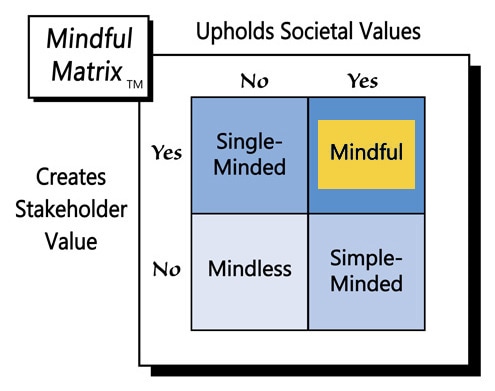The thought of college dormitories may draw a sneer from those who remember cramped quarters that looked and smelled questionable. Of course, people’s perspective of college dorm life is largely a function of their own experience, which can vary greatly based on the time and place. Over recent years, college dorms have gotten much nicer. In fact, some “luxury” dormitories now include outdoor gourmet grilling kitchens, infinity pools, and 55” smart TVs—a pretty cushy experience.
No matter how nice the residences, after spending several years in dorms and finally finishing college, do new graduates really want to continue living in a single room and sharing common spaces with strangers? That’s the time in life when you’re finally able to truly be on your own and enjoy expanded freedom and space. Surprisingly, however, there is significant demand for “adult dorms,” and several companies are capitalizing on the “coliving” craze.
I should preface the rest of this piece by saying that “adult dorms” is the term that many different media have used to describe dorm-like living after college. As someone who works regularly with college students, I certainly believe the term shouldn't imply that college students aren't already adults, because they are.
Although the coliving concept could potentially appeal anywhere, the configuration makes the most economic sense in big cities, where apartment rent is astronomical. For example, the median monthly rent for a 1 bedroom apartment in New York City is $3,400, while San Francisco is a staggering $3,560. It’s not shocking, therefore, to realize that rent as a percentage of income averages 65% in the Big Apple and 78% in the City Bay the Bay.
Companies tapping into the demand for coliving in major U.S. markets include Stage 3 (NYC), Open Door (San Francisco), and WeLive (NYC and Washington, DC). WeLive is a $1.4 billion new venture of WeWork; the company known for shared office space has decided to diversify into shared living space.
What exactly does coliving look like? The description of one market participant’s property provides a window into the world of adult dorms: Common offers “Shared housing for those who live life in common” in three different neighborhoods in Brooklyn, NY, with another planned for Crown Heights, and more on the way for San Francisco and Washington, DC. The company paints the following picture of its Havemeyer housing in the Williamsburg neighborhood of Brooklyn:
“Everything you need to instantly feel at home is included in your membership including fully furnished rooms, linens, free onsite laundry, every kitchen appliance imaginable, weekly cleaning services, high-speed wi-fi, shared kitchen and bathroom staples, all utilities and great friends.”
“We have everything you need to live in community. Head downstairs to our wellness studio to unwind from the day, then to one of our communal living rooms for book club and potluck dinners or sit back and enjoy movie night in the entertainment room. For those quiet moments and stunning sunsets, lounge in one of our outdoor patios or on one of the four rooftop decks.”
Rooms at Havemeyer are not cheap. They start at $1,800/month, which includes all furnishings and utilities, and residents supposedly do not incur any extra fees. When the company talks about sharing, that refers to everything else, including bathrooms; although, for many the ability to easily connect with others is undoubtedly a big part of the appeal.
Stage 3’s Ollie property located on 27th St. in NYC promises “hotel-style conveniences” and has most of the same amenities mentioned above plus butler services from a home manager named “Alfred” who does things like drop off dry-cleaning and pick up prescriptions. Rooms at Ollie rent for about $1,600/month, which reportedly is lower than the areas average studio apartment, which go for $2,000/month.
So, what’s driving demand for adult dorms? There are likely several factors at play. Price appears to be one; although, as the descriptions above suggested, these one-room rentals aren’t exactly inexpensive. However, compared to other housing alternatives for young people trying to make their way in major metropoles, the cost is competitive, especially when factoring in the supplementary services received.
Of course, there’s also the community appeal. For millennials who are used to dormitories and open work spaces at their places of employment, coliving is nothing new. More importantly, many relish the ability to easily meet and socialize with others, which the common living spaces facilitate. A typical apartment renter, in contrast, can feel very isolated. The bottom line is that for most, coliving with peers is a much preferred alternative to moving back into mom and dad’s basement.
So, adult dorms seem to offer a worthwhile value proposition for the right renters. Coliving also appears to be a viable business model, based on the success of the aforementioned companies, as well as their forecasts: The Wall Street Journal reports that WeLive plans to open 70 locations for more than 30,000 residents by 2018. (1) With its community ethos, the coliving concept also seems to support societal values like respect for individuals and stewardship of resources. In sum, this professor gives adult dorms an ‘A’ for “Mindful Marketing.”
Learn more about the Mindful Matrix and Mindful Meter.
Check out Mindful Marketing Ads and Vote your Mind!




 RSS Feed
RSS Feed